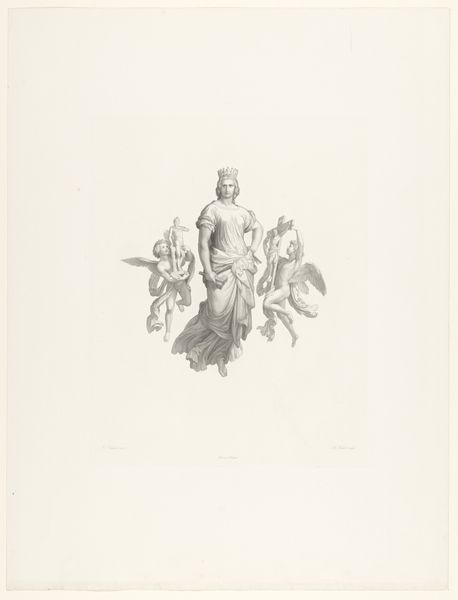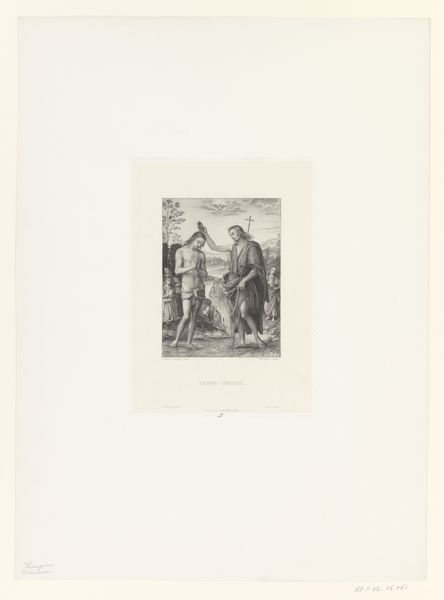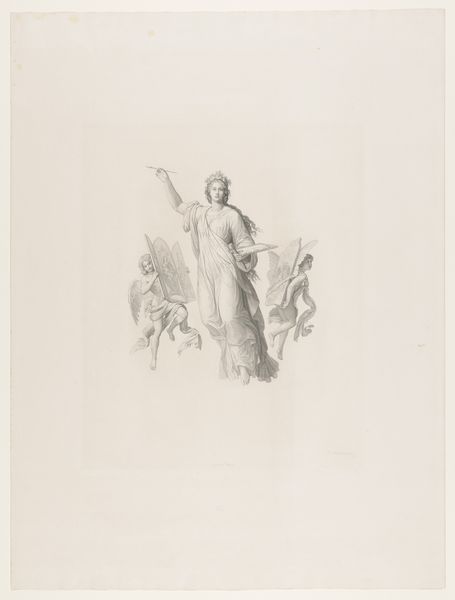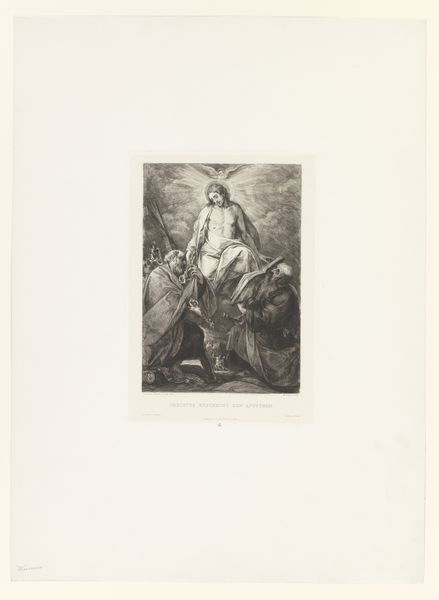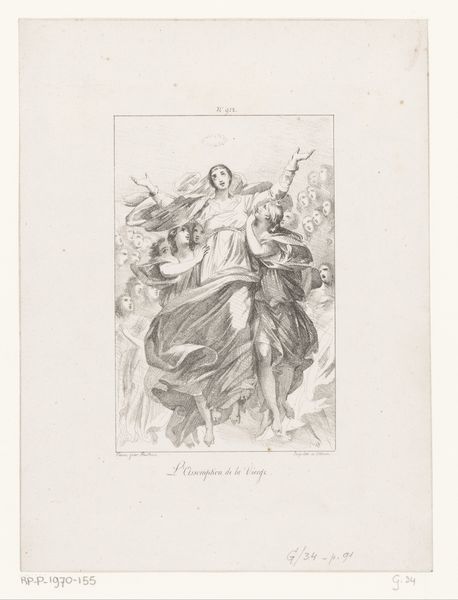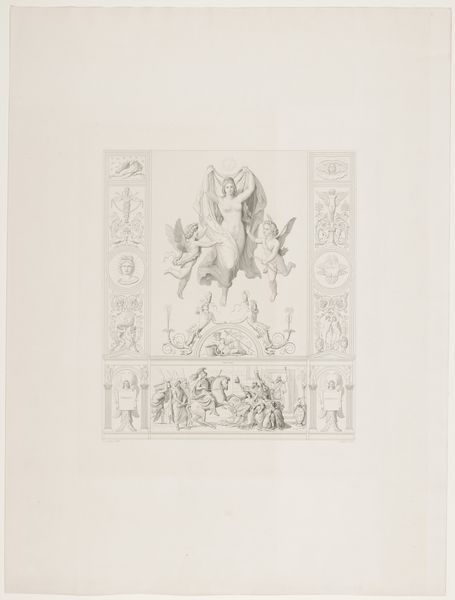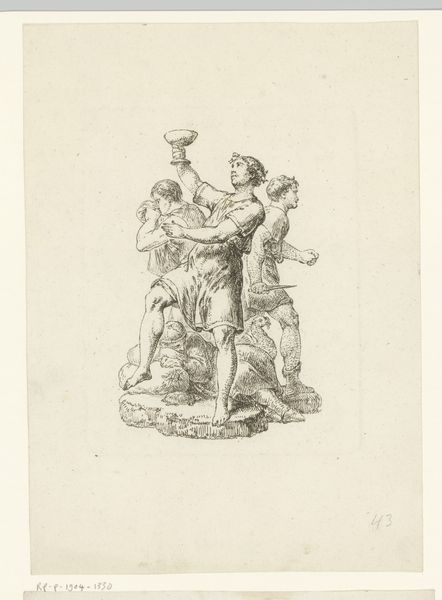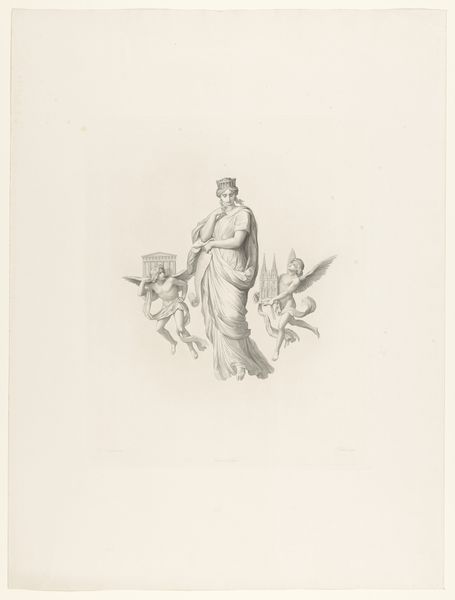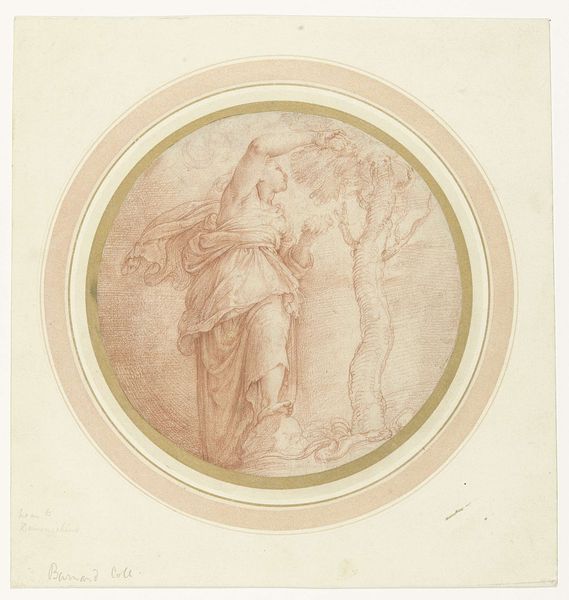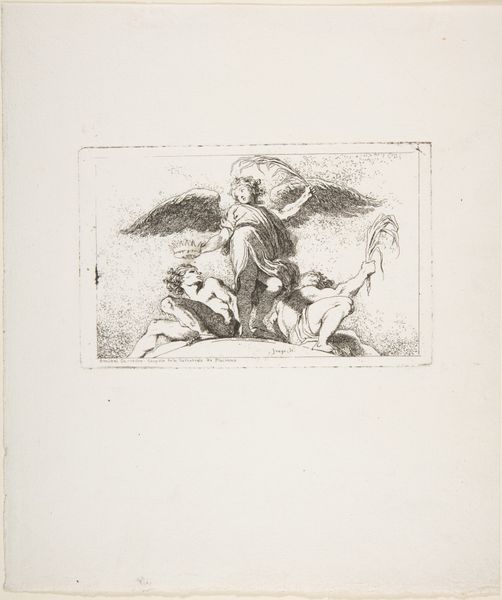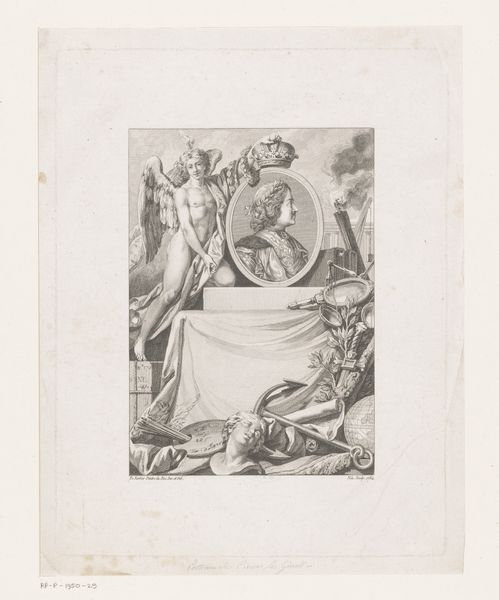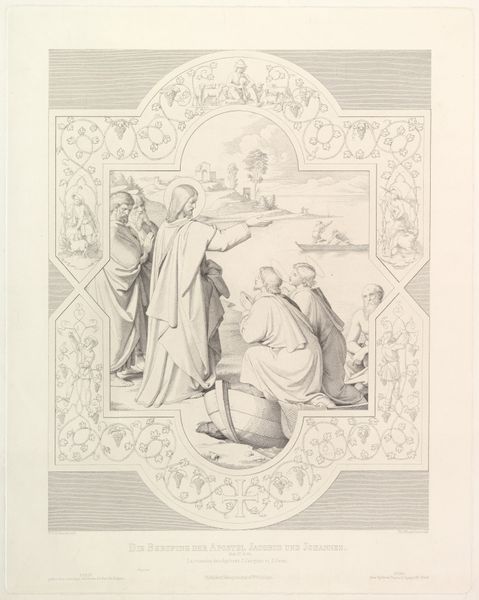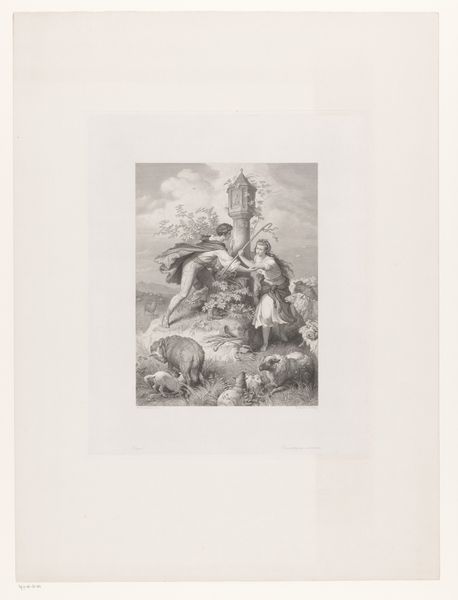
print, engraving
#
neoclacissism
#
allegory
# print
#
figuration
#
history-painting
#
engraving
Dimensions: height 489 mm, width 400 mm
Copyright: Rijks Museum: Open Domain
Albert Teichel created this allegory of engraving sometime in the mid-19th century. At the center, we see a robed figure with a wreath who holds a blank tablet, flanked by cherubic figures. The winged putti are a clear reference to classical antiquity. We see them later in Renaissance art, where they represent a connection to the divine. The blank tablet in the central figure's hands is interesting as well. In ancient times, tablets were the canvas for immortalizing and recording history. The wreath is a classical symbol of victory. Interestingly, the lack of any engraving on the tablet suggests infinite possibility—an apt metaphor for the power of the engraver’s art. Here, the cherubs embody the awakening of creative genius, a concept rooted deeply in our collective psyche. These motifs continue to evolve, reflecting society’s changing values and artistic expressions.
Comments
No comments
Be the first to comment and join the conversation on the ultimate creative platform.
